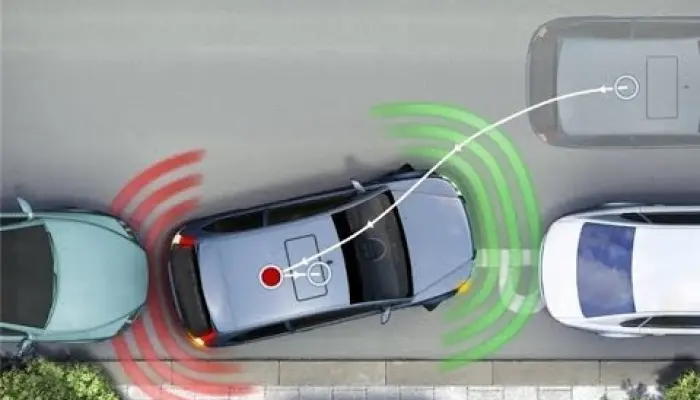Choosing between parking sensors and a rear view camera can greatly simplify the parking process for any driver, especially beginners. Both devices offer their own advantages, but which one is better suited for a particular situation? Let's delve into their features to understand more.
Parking Sensors: Reliable Detection of Obstacles in All Conditions
Parking sensors, devices that facilitate parking through radar technology, are often factory-installed on modern vehicles. These sensors accurately detect obstacles around the car. Typically, there are four sensors on the rear bumper or eight total, with four on each bumper. Information about obstacles and their distance is conveyed to the driver through audible beeps and visual signals.
To determine whether parking sensors or a rear view camera is better, comparing their advantages and disadvantages will help make an informed decision.
Advantages and Disadvantages of Parking Sensors
Parking sensors on a vehicle offer numerous benefits:
- Universality: Sensors are suitable for almost any car model;
- Effectiveness: They detect obstacles even in the dark or in poor visibility conditions;
- Distance control: The intensity of sound and light alerts changes as you get closer to an obstacle.
However, parking sensors have some drawbacks:
- Bumper installation required, involving drilling holes;
- Lack of visual overview, unlike cameras with marking lines;
- Inability to detect small obstacles, such as stones or glass shards.
Rear View Camera: Clear Display of the Driving Path
Rear view cameras, introduced after parking sensors, have already gained popularity among drivers. They allow the driver to see obstacles in their path visually.
Advantages and Disadvantages of Rear View Cameras
Rear view cameras offer significant benefits for parking:
- Visualization: Instant image transmission to the screen;
- Position assessment: Drivers can independently gauge the distance to obstacles;
- Marking lines: Show the exact path the vehicle is taking.
The limitations of rear view cameras include:
- The need for a display screen connection;
- Limited visibility in darkness;
- The lens requires regular cleaning from dirt and water.
Parking Sensors or Rear View Camera: How to Choose?
Considering the strengths and weaknesses of both systems, you can determine which is more suitable for you - parking sensors or a rear view camera. The camera provides a full overview of what's happening behind the vehicle, while parking sensors effectively warn of obstacles.
Both devices range from budget to more expensive options. The choice depends on personal preferences and the driver's capabilities. Using both devices together ensures the most informative and safe parking experience.
